by Emylene VanderVelden and Ryan Jordan
Update February 4, 2025: Product selections have been updated to reflect the current state of the market for coffee brewing equipment and supplies. In addition, we added an immersion brewing section and updated our “What the Authors Use” section to reflect our current practices.
Introduction
Ultralight backpacking embodies the values of simplicity and weight savings. Some of that gets thrown out the window when the subject of backcountry coffee comes up (depending on your level of java snobbery). This article provides an overview of coffee-making methods (how to make coffee in the backcountry) while backpacking, with a study of their complexity and weight.
Under no circumstances should you let a non-coffee drinker brew your coffee. Non-coffee drinkers CANNOT be trusted to make acceptable coffee. If some well-meaning tent-mate gets up early and offers to bring you coffee in bed, do NOT let them. You will be sadly disappointed, and the entire day may founder in a miasma of negative drama. – Mike Clelland, The Beautiful Cup: Backcountry Coffee for the Ultralight Backpacker.

What is Still True About How to Make Coffee in the Backcountry
In 2010, Mike made some valid observations, and we wholeheartedly agree with them.
He said:
As you may have gathered, I’ve got some opinions about this whole coffee thing. So, before we go any further, and in the interest of full disclosure, here are a few of my prejudices:
- Strong coffee is good coffee.
- Except for a very few companions, I don’t trust anyone to make coffee for me.
- Adding sugar to coffee is criminal.
- Sometimes I add a little milk in my coffee, but black is just fine.
- Adding flavors (like hazelnut and almandine) to an already perfect drink is sinful.
- Picking grounds out of my teeth is a serious buzz kill.
- Coffee equals joy.
How Coffee Brewing is Controlled
The bean source, roasting method, and freshness have an impact on the quality of your coffee.
But you have some brewing control as well. Depending on the method, you can adjust:
- Brewing water temperature;
- Rate of flow (or time of exposure between coffee and water);
- Water pressure (e.g., espresso is drawn at higher-than-ambient pressures).
Changing the temperature, flow rate, and pressure allows you to fine-tune your flavor profile. The ability to control these three variables will be evaluated when we look at coffee-making gear.
A note on temperature that may be relevant for backpackers in mountain environments: boiling temperature changes with altitude. At sea level, the boiling temperature is 212 F (100 C). At 9,000 ft (2743 m), the boiling temperature is about 195 F (90.5 C).
Nine thousand feet (2743 m) is kind of an important inflection point with respect to coffee extraction and altitude.
It’s generally accepted by most coffee aficionados that the ideal extraction temperature is 195 F (90.5 C) to 205 F (96.1 C), so once you climb above 9,000 ft (2743 m), you may want to increase your brew time a bit if you’re after a stronger cup of coffee.
Coffee-Making Methods and Gear for Backpacking
The popularity of coffee-drinking1 is being driven by a rise in boutique coffeehouses, micro-roasting, and consumers’ unquenchable thirst for cool new gear. Thankfully, this market enthusiasm is spilling over into a wide range of portable coffee-making supplies and tactics:
- The French press
- Immersion Brewers
- Mini espresso makers
- Pour-over coffee makers
- Coffee & tea infusers
- Instant coffee
- Coffee paste
- DIY cold brew
The following table summarizes each method in terms of its weight, brew time, nature of flow, pressure, cleanup, and coffee quality.
Scroll right to view all columns.
| weight | prep + brew + cleanup time | passive/active flow | pressure | cleanup | coffee quality potential | |
|---|---|---|---|---|---|---|
| French press (standalone) | heavy | slow | passive | atmospheric | messy | high |
| French press (integrated) | light | slow | passive | atmospheric | messy | high |
| Mini espresso maker | heavy | slow | active | pressurized | moderate | high |
| Pour-over coffee makers (with disposable filters) | light | moderate | active | atmospheric | easy | high |
| Pour-over coffee makers (integrated filter screens) | light | slow | active | atmospheric | messy | medium |
| Instant coffee | lightest | fastest | n/a | n/a | easy | medium |
| Infusers | light | moderate | passive | atmospheric | moderate | medium |
| Cowboy/Turkish | light | moderate | passive | atmospheric | messy | medium |
In addition, we’ll touch on coffee grinders, coffee alternatives, and whiteners towards the end.
The French Press
The French press method of coffee brewing gives the brewer a great deal of control over the resulting coffee flavor, owing mainly to the fact that brew time can be varied. (As with other techniques, you can also control the flavor by altering the brewing water temperature and the coarseness of the grind). French press technique should generally use a coarse ground coffee because all of the extracted oils are retained (and not filtered out) – a finer grind (and/or a longer brew time) will result in more bitterness.
Outdoor product manufacturers offer a wide range of light, sturdy, portable standalone French presses and integrated presses for cooking mugs and pots. They aren’t the lightest option (in fact, self-contained presses are among the heaviest), but French-pressed coffee has the potential to be very strong and flavorful.
We like the integrated cooking mug/pot press idea, except for one minor detail: if you are making coffee, you cannot use the pot for anything else until you wash it out. That means you have to make your meal in sequential cooking batches, and can’t drink your coffee with your food without transferring the coffee to a separate mug, cleaning the pot, etc.
The GSI Outdoors Commuter JavaPress is a 15 fl. oz. insulated copolyester coffee press weighing 10.3 oz (292 g), with an integrated sliding inner carafe that separates coffee grounds after brewing, eliminating the need for a plunger rod; features a spill-resistant, flip-top lid, a foam sleeve for insulation, a press-and-drink-through design, and prevents over-extraction by keeping grounds separated after pressing.
The Snow Peak Titanium French Press is crafted from single-wall Japanese titanium, allowing direct heating over a heat source. It has a capacity of 24 fl. oz. (0.7 liters) and weighs 6.3 oz. (179 g).
The WoodKnot Gear Titanium 750ml Camp Coffee Kit is made from high-grade titanium, offering lightweight durability and corrosion resistance. It features a stylish wooden knob, vented lid, double folding handles, and a bail handle, allowing it to function as a French press, water boiler, or cooking pot. Weighs 6.4 oz (181 g); 7 oz (198 g) including the stuff sack.
The MSR WindBurner Coffee Press is designed for WindBurner Stove Systems, featuring a durable stainless steel strainer disc and a flexible perimeter gasket to seal out coffee grounds. It disassembles and packs flat for easy storage. Available in 1.0L and 1.8L sizes, weighing 1.3 oz (37 g) and 1.6 oz (45 g) respectively.
The Jetboil Silicone Coffee Press is a lightweight accessory weighing 1.3 oz (37 g), made from stainless steel and food-grade silicone. Designed to fit Jetboil Zip, Flash, Flash Lite, MicroMo, PCS Sol, and Sol TI cooking systems, as well as 1-liter tall and 0.8-liter spare cups. It features a heat-resistant silicone ring for a secure fit, preventing coffee grounds from escaping during plunging. The stem and basket detach for compact storage within the cooking system.

Immersion Brewers
Similar to a French press, an immersion brewer steeps coffee grounds fully in water for a set period of time, essentially “soaking” them prior to filtering them out. Immersion brewers are distinguished from French presses by forcing the brew through finer mesh or paper filters to create the clarified filtrate. The result is a smoother (less bold) cup of coffee because the fine grind is filtered out prior to drinking with an immersion brewer.
The AeroPress Go Travel Coffee Press is a compact and portable coffee maker weighing 11.4 oz (323 g) that brews 1 to 3 cups of American, espresso, or cold brew style coffee in about a minute; made from food-safe polypropylene (PP) and includes a mug with a lid that doubles as a carrying case.
The Cafflano Kompact Coffee Maker is a portable, compact coffee brewer designed for convenience. It features a simple press-down mechanism for brewing coffee on the go.
Mini Espresso Makers
An espresso maker uses high pressure to quickly force hot water through finely-ground coffee, resulting in a much more concentrated shot with a stronger flavor profile.
Mini espresso makers are unique because they can extract coffee at nine bars (or more) of pressure (i.e., 130 PSI). That’s nine times the ambient atmospheric pressure where other coffee brewing methods operate. This is important because higher pressures can extract coffee oils more aggressively (and require less contact time). A finer grind is required when making espresso, because of the short contact time (about 30 seconds, generally, vs. 2-5 minutes for traditional brew methods). The result is a much richer-tasting coffee without the bitterness of a long water contact time.
The idea of adding a mini espresso maker to our kit seemed revolutionary to us – a real shot of pressure-drawn espresso? That sounded too good to be true.
The Wacaco Minipresso GR2 is a compact, hand-operated espresso maker with an adjustable basket for 8 to 12 grams of ground coffee. It features a built-in water tank with an 80 ml capacity and operates at a maximum pressure of 18 bar. Weighs 10 oz (285 g).
Cafflano KompressoThe Cafflano Kompresso is a portable espresso maker designed to deliver a consistent 9-bar pressure for authentic espresso extraction. It utilizes hydraulic compression and features a compact, lightweight design.
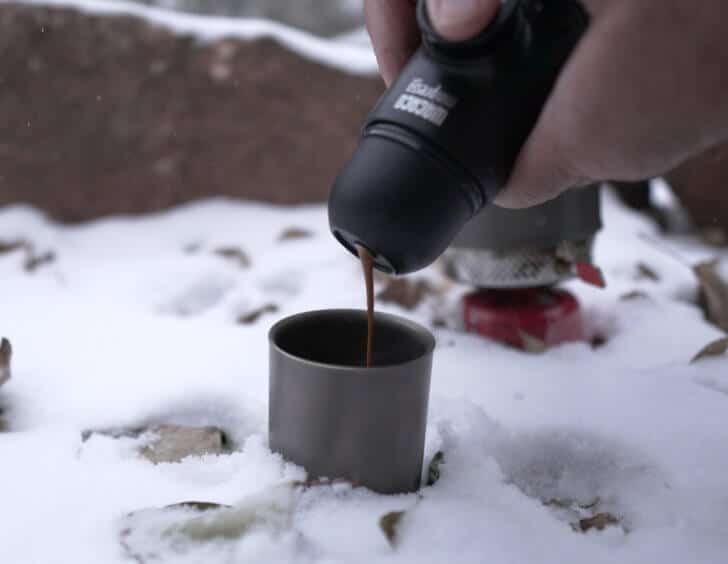
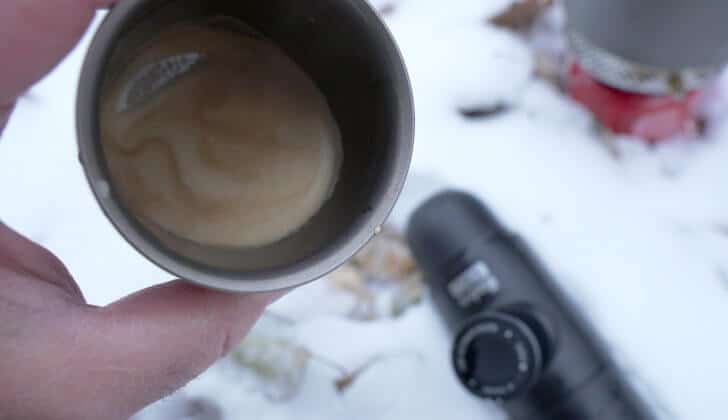
Pour-Over Coffee Makers
Pour-over coffee allows you to exert some control over the flow rate of the water. The primary difference between a French-pressed coffee and a pour-over coffee is that French press is a batch brewing technique (no water flow, just soaking), and pour-over is a flow-through brewing technique. Because the grounds are not coming into contact with the brewed coffee filtrate (and aren’t exposed for as long of a time), it takes a finer grind and slower, more patient pour to achieve the strength of a French-pressed coffee. One distinct advantage of the pour-over method: no coffee ground grit (some drinkers will enjoy this, however).
Some pour-over cones require the use of an additional filter; others include integrated plastic or metal mesh screens. The latter avoid disposable supplies, but are messier to operate.
Pour-Over Coffee Makers:
The GSI Outdoors Ultralight Java Drip Coffee Maker is an ultra-compact, reusable drip coffee filter that clips onto any mug for backcountry brewing. It weighs less than half an ounce (11 g) and features sturdy legs that clip to your mug for stability during brewing.
The Suluk 46 Kapik Titanium Coffee Drip is a portable coffee brewing device made from titanium. It consists of four interlocking pieces that form a pyramid-style funnel, with out-rigging legs that rest securely on vessels up to 4.5 inches in diameter. Weighs 1.6 oz (46 g).
The GSI Outdoors Coffee Rocket is a one-person pour-over coffee maker designed for camping. It features a 230 ml drip cone and a reusable stainless steel filter. The hopper holds up to 10 grams of medium grind coffee. The filter body nests into the water hopper for compact storage. Weighs 2.7 oz (76.5 g).
The Vargo Titanium Travel Coffee Filter is a solo pour-over coffee maker made from 100% biocompatible titanium, ensuring no chemical leaching or flavor imparting. It features double mesh construction for strength and fine filtering, and talon-style folding legs that fit a wide variety of mugs. Weighs 1.27 oz (36 g).
The SOTO Helix Coffee Maker is a collapsible stainless steel filter holder weighing 1.6 oz (46 g), compatible with #2 cone filters, and includes a mesh carrying bag.
The GSI Outdoors Reusable Pour-Over Java Filter is designed to brew coffee or tea repeatedly. Made from durable nylon, it fits into traditional #4 cone pour-over coffee makers and is easy to use and clean. Weighs 0.16 oz (4.5 g).
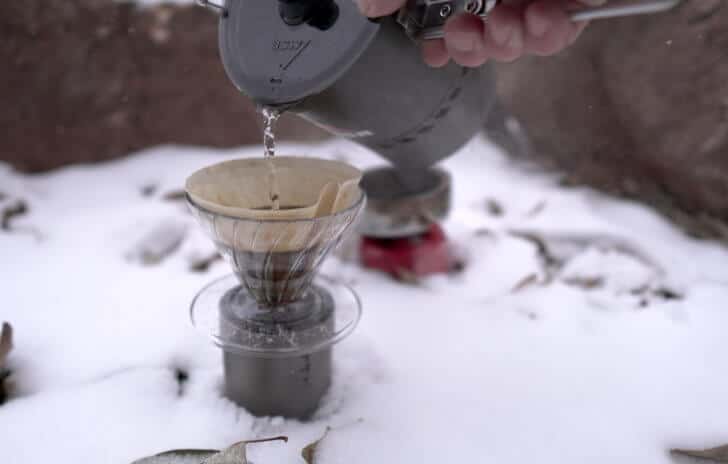
In addition to pour-over hardware, disposable options also exist. The Kuju Coffee Pocket is one such option (we reviewed Kuju Coffee here). Ryan Jordan reviewed another one here, where you can see in action how disposable pour-overs work (with video).
Kuju Coffee's Single-Serve Pour Over Coffee features a filter that anchors to your mug and is filled with specialty-grade, ethically sourced coffee grounds. Simply tear open the packet, anchor it to your mug, and pour hot water to brew a fresh cup in minutes.
Coffee and Tea Infusers
An infuser is little more than a mesh “basket” containing ground coffee (or loose-leaf tea) that is inserted into a cup of hot water. The water then passively extracts the coffee – there’s no pouring, pumping, or other types of active (flow) extraction method involved other than human-powered swirling.
The MSR MugMate Coffee/Tea Filter is a reusable filter designed for brewing coffee or tea without disposable paper filters. It weighs 0.98 oz (28 g) and is made of nylon.
The JoGo Brew Straw is a portable brewing device made from food-grade stainless steel and BPA-free silicone. It allows users to brew and drink coffee or tea directly from a cup without the need for a separate filter, featuring a built-in mesh filter to prevent grounds or leaves from being consumed. Weighs 1 oz (28 g).
Instant Coffee
We have a fundamental disagreement with Mike about instant coffee. He writes “Instant coffee isn’t actually coffee, and is therefore outside the scope of this discussion. It is quite simply not an option.”
Some instant coffee manufacturers have realized consumers will not drink flavored mud water and have improved instant coffee standards accordingly. If we are desperate for coffee and saving weight, Starbucks Instant and Medaglia D’Oro are bold, tasty options. They may not be as good as French press or espresso, but they aren’t terrible either – especially when you consider the weight of instant freeze-dried coffee powder (very light!) and ease of use.
Other companies have entered the instant coffee market and are pitching their grind specifically to the outdoorsy type:
Alpine Start's Original Blend is a medium roast instant coffee made from 100% Colombian Arabica beans. Each packet contains 0.1 oz (2.8 g) of coffee, providing approximately 120 mg of caffeine per serving. The product is non-GMO, dairy-free, and gluten-free.
This instant coffee is made from high-elevation 100% Arabica beans sourced from a Rainforest Alliance Certified plantation practicing regenerative agriculture and organic farming. Each packet contains 0.07 oz (2 g) of coffee, providing 110 mg of caffeine per serving. Here's what's interesting about this one: it's made by evaporative dehydration following cold brewing. This makes for a smoother mouth-feel and less chemical aftertaste than hot-brewed/freeze-dried instant coffee processing.
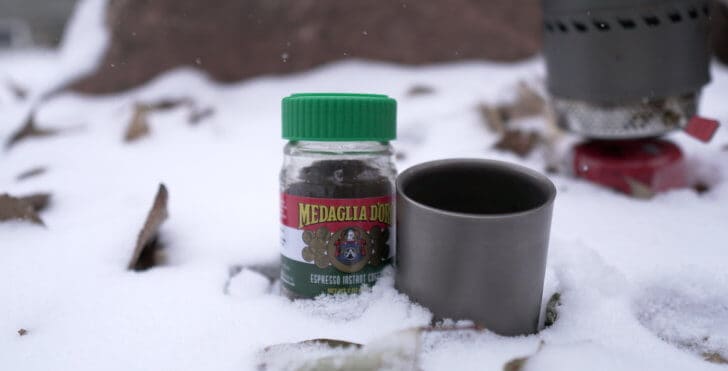
Coffee Paste
Coffee paste is a new product that is dispensed from an aluminum tube, can be used to make cold or hot coffee, can be ingested directly like a gel, or used as a food additive or spread. This makes coffee paste more versatile and more easily dosable than conventional coffee.
See our review of No Normal Coffee Paste here.
No Normal Coffee paste is crafted from 100% Fairtrade Arabica beans and sweetened with organic Swiss beet sugar. Flavor profile: rich, indulgent flavor with hints of chocolate, nuts and caramel. Swiss-made. Each 100 g tube makes 20 cups of coffee. Drink hot or cold or use as a spread.
DIY Cold Brew
Cold brew is an extraction method using cold (or room temperature) water. The cooler extraction temperature means that oils are extracted more slowly, so making a batch of cold brew takes a long time – usually several hours. In addition, the oils that are extracted have a flavor profile that is generally considered to be more “smooth” than “bitter”. Bitter oils are extracted by hotter water, especially near the boiling point (near sea level at least).
Cold brew coffee is a recent invention and can be made in your water bottle. The big drawback is that it takes about 12 hours to make it. If you plan ahead the night before, you can have cold brew ready the next morning.
Cold brew can be enjoyed cold or warmed up, and it has a smoother, sweeter flavor than hot-brewed coffee. We recommend a wide-mouthed bottle, which will be easier to clean and add coffee without a mess.
Soft-sided bottles, of course, are the lightest, but they tend to hold odors more than hard-sided bottles (e.g., Nalgene).
To make cold brew:
- Add 1 cup of coarsely ground coffee beans to 4 cups of water;
- Mix well to ensure wetting of the grind;
- Let it steep for 12 hours;
- Strain the grounds with a coffee filter or a piece of cheesecloth as you pour into your cup for enjoyment.
Cowboy and Turkish Coffee
Cowboy and Turkish methods rely on soaking coffee grounds in hot water. They both include a bit of stirring and settling art. No extra gear is required because the grounds aren’t separated from the final brew. Thus, some grit is inevitable. Both methods are a bit messy when it comes to cleanup. Mike addresses these methods in A Beautiful Cup.
Lightweight Coffee Grinders
The coffee brewing methods discussed above may give you some control over the brewing temperature, flow rate (brewing time), and water pressure. If you also want control over the freshness and grind, consider a portable coffee mill.
Check out one of the 24 g capacity miniature models from Hario, which are light and capable of grinding as fine as espresso.
How to Deal With Your Coffee Grounds
If you use ground coffee in the backcountry, you’ll have to manage the proper disposal of your coffee grounds.
If leave-no-trace is one of your core ethics, then you have only one option: pack them out. They aren’t natural to the environment you are visiting, and you’ll be hard-pressed to justify that dispersing them or burying them will benefit sensitive, native plants.
After making our morning coffee, we’ll dry the leftover grounds out in the sun (spread them out on filter paper) – this saves pack weight.
Chocolate-Covered Coffee Beans
We’ve covered most of the obvious caffeination techniques so far. Still, if your only goal is rapid and straightforward caffeine delivery, there are pills for that. Or you can add chocolate-covered coffee beans to your trail mix.
Chocolate-covered coffee beans are multipurpose – they are both a calorie supplement and a caffeinator. They don’t offer a ‘ritualistic’ coffee experience, but they are fast, easy, and lightweight.
Most chocolate-covered coffee beans will melt if they get too warm. I (Emylene) use these workarounds:
- Wrapping packaged beans in aluminum foil and keeping them in my water bladder compartment to keep them cool;
- Tossing the beans into a bag of trail mix and then eat the chocolate, coffee bean, fruit, and nut clusters after they melt and solidify again. (Important: let them harden before opening the bag, or they are disastrously messy).
A Word on Whiteners, Milk, and Instant Coffee-“Milk” Blends
In addition to powdered milk, there are now plenty of powdered options for non-dairy and lactose-free creamers.
Want to froth your own? The battery-operated AeroLatte is portable and light enough (5.1 oz / 146 g) for some of you who may want foam for a latte.

What the Authors Use
As coffee enthusiasts, we’ve each refined our brewing setups over the years, settling into systems that balance convenience, weight, and the ritual of a good backcountry brew.
Emylene’s Setup
Emylene’s go-to method remains the GSI Ultralight Java Drip paired with Melitta #2 Bamboo Cone Filters for cleaner flavor and easy cleanup. When she wants a true espresso shot in the wild, the Wacaco Nanopresso delivers results that rival her home machine. For quick and lightweight options, Flash Fuel Instant Coffee has earned an honorable mention for its craft quality.
She still enjoys a cowboy coffee now and then for nostalgia (and skill maintenance) but sticks to her three primary methods: pour-over, instant, and hand-pumped espresso. The biggest change in her coffee routine? Upgraded sipping vessels. She’s transitioned from a plastic truck-stop cup to a Yeti Rambler Mug for frontcountry use and a Snow Peak Ti-Double 450 Anodized Mug with a silicone lid when weight matters.
For grinding, she’s moved from a small pepper mill to a GSI JavaGrind when weight allows, or pre-grinds beans before the trip. Her favorite roast? 454 Horse Power from Kicking Horse Coffee, a bold, organic, fair-trade dark roast with notes of cocoa nibs, peat, and nutmeg.
The Snow Peak Ti-Double 450 Anodized Mug is a lightweight, double-walled titanium mug with excellent heat retention and durability. Its 450ml capacity and compact design make it a practical, high-performance choice for hikers and backpackers seeking reliable, lightweight gear for hot beverages in the backcountry.
Ryan’s Setup
For long trips where weight and simplicity matter most, Ryan prefers Starbucks Premium Instant Coffee — not in Via packets, but from the can. The can adds a ritualistic element to the process – like an old-timey western cowboy scooping grinds from their metal tin). It also offers better dose control than single-use packets.
Lately, he’s also been experimenting with No Normal Coffee Paste, an unconventional option that delivers an on-the-go caffeine boost straight from the tube or spread onto an energy bar.
When time and ritual are central to his morning, he opts for a pour-over setup with a Hario V60 #01 system, using a plastic dripper, ground beans from Kind Coffee in Estes Park, and unbleached paper filters. Though bulkier than some ultralight solutions, the Hario setup provides a slow, methodical coffee experience that enhances his mornings in the backcountry.
His mug of choice? Whether working from the office or lounging in front of his tent, it’s the Snow Peak H-series of double-wall titanium mugs (with the H200 for backcountry use).
Simple, beautiful, and effective - this double wall titanium mug reflects design simplicity and elegance while keeping hot drinks warm in the backcountry. 200 ml capacity, 2.2 ounce (62 g) weight.
Summary
The self-identified “ultralight backpacker” may view some of the options for brewing coffee presented in this article as too complicated, too time-consuming, too messy, or too heavy. Those of you who value Via over vive le coffee will find little satisfaction in packing another 4 oz (or more) of “coffee-making gear”.
But for some hikers, coffee isn’t just a drink; it’s an act of joy. A ritualistic practice as part of a lifestyle. An experience that enhances a sunrise, a mid-day trail break, or a game of cards during a tent-bound rainstorm with a hiking companion.
And for some, there’s the art and science of creating a masterpiece of brewing where you want to exert some control over the freshness of your grind, the coarseness of your grind, the temperature of the water, the grind:water ratio, the flow rate, and the pressure.
The bottom line is this.
Some people like to paint in the backcountry and bring a watercolor kit and a sketch pad. Others like to write, and do so with a nice pen and a fancy, leather-bound journal. Photographers have their own gear needs – tripods, cameras, filters, sliders. People who like to fish for trout bring rods, reels, flies, and tackle. Some of us bring chairs, or Kindles, or cribbage boards.
Others are into brewing coffee.
And thus, the beauty of lightweight backpacking is revealed – not in the weight you save by leaving everything at home, but in the weight you save with lightweight gear and skills that allow you to enjoy some experiences that you otherwise wouldn’t have considered before.
Like sipping an outrageous cup of coffee in a wild place.
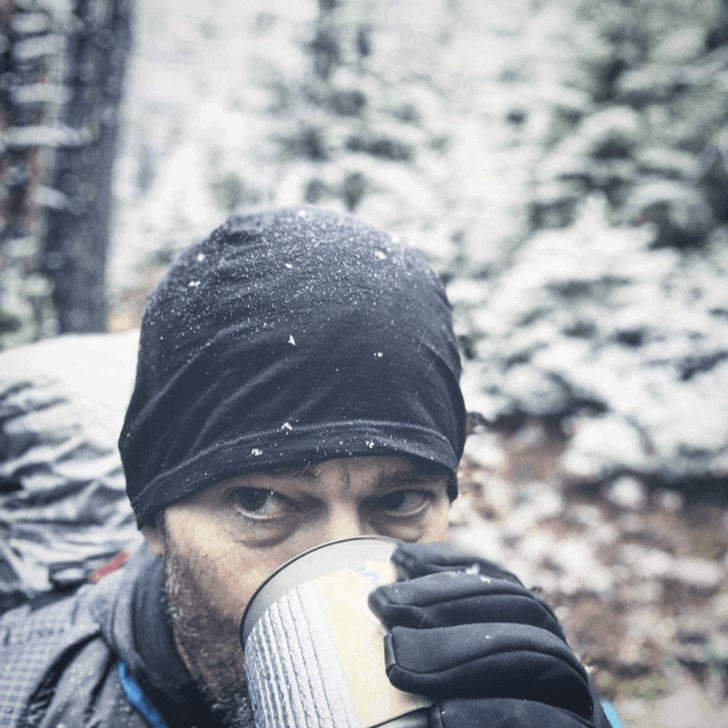
Endnotes
1 The definitive industry market research on the topic of coffee is published by the National Coffee Association: National Coffee Data Trends Report (https://www.ncausa.org/Research-Trends/Market-Research/NCDT).
DISCLOSURE (Updated April 9, 2024)
- Backpacking Light does not accept compensation or donated/discounted products in exchange for product mentions or placements in editorial coverage. Some (but not all) of the links in this review may be affiliate links. If you click on one of these links and visit one of our affiliate partners (usually a retailer site), and subsequently place an order with that retailer, we receive a commission on your entire order, which varies between 3% and 15% of the purchase price. Affiliate commissions represent less than 15% of Backpacking Light's gross revenue. More than 70% of our revenue comes from Membership Fees. So if you'd really like to support our work, don't buy gear you don't need - support our consumer advocacy work and become a Member instead. Learn more about affiliate commissions, influencer marketing, and our consumer advocacy work by reading our article Stop wasting money on gear.

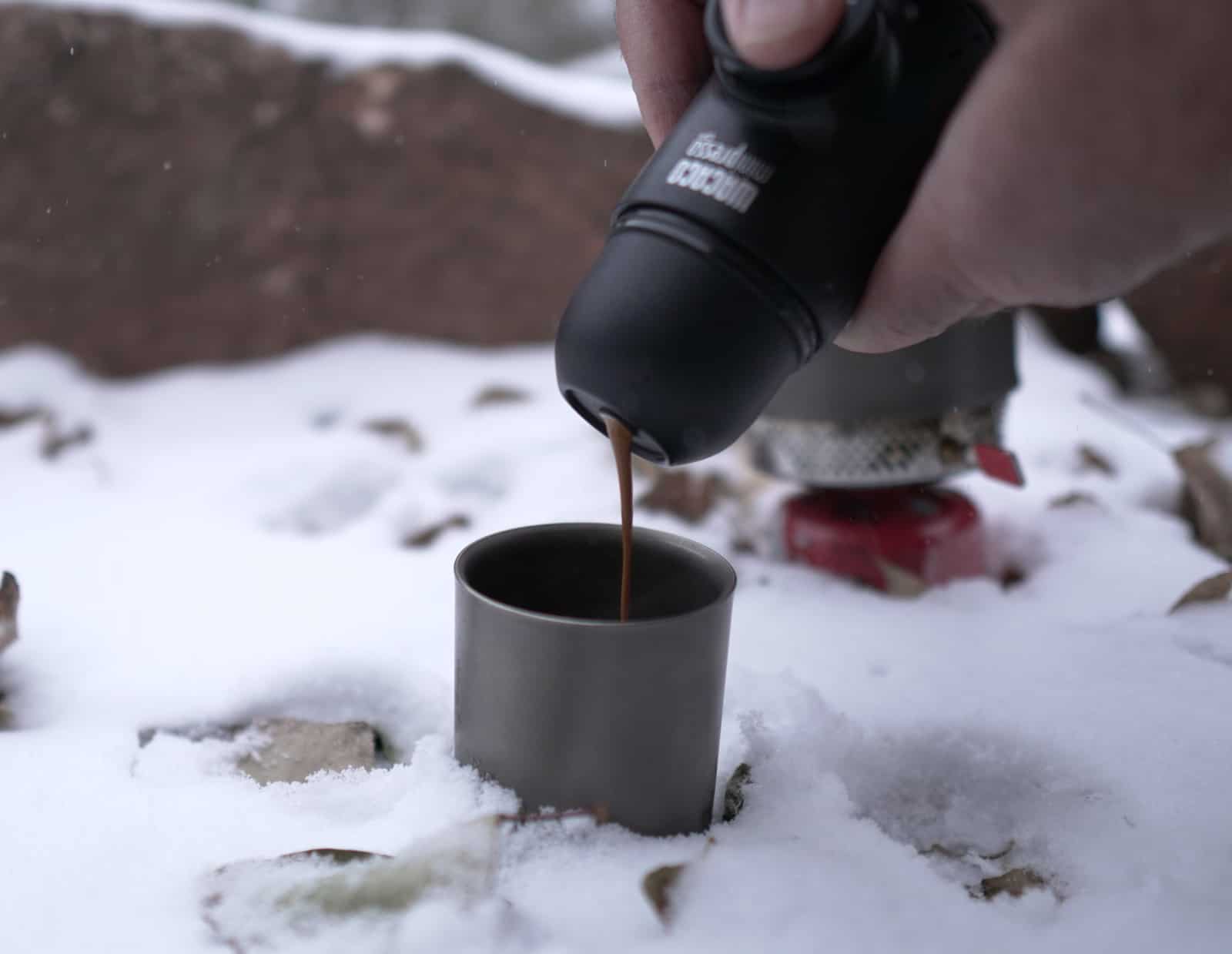
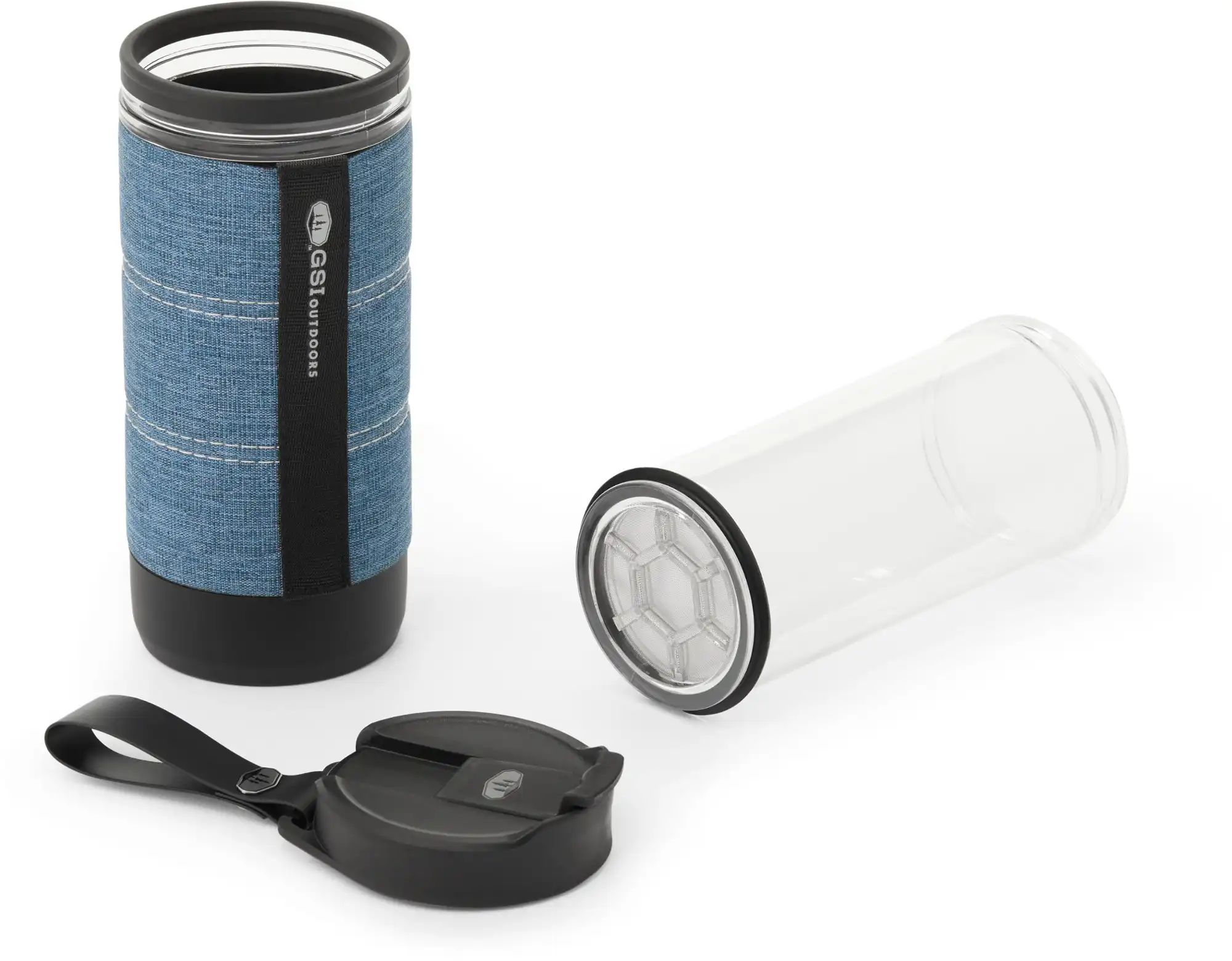
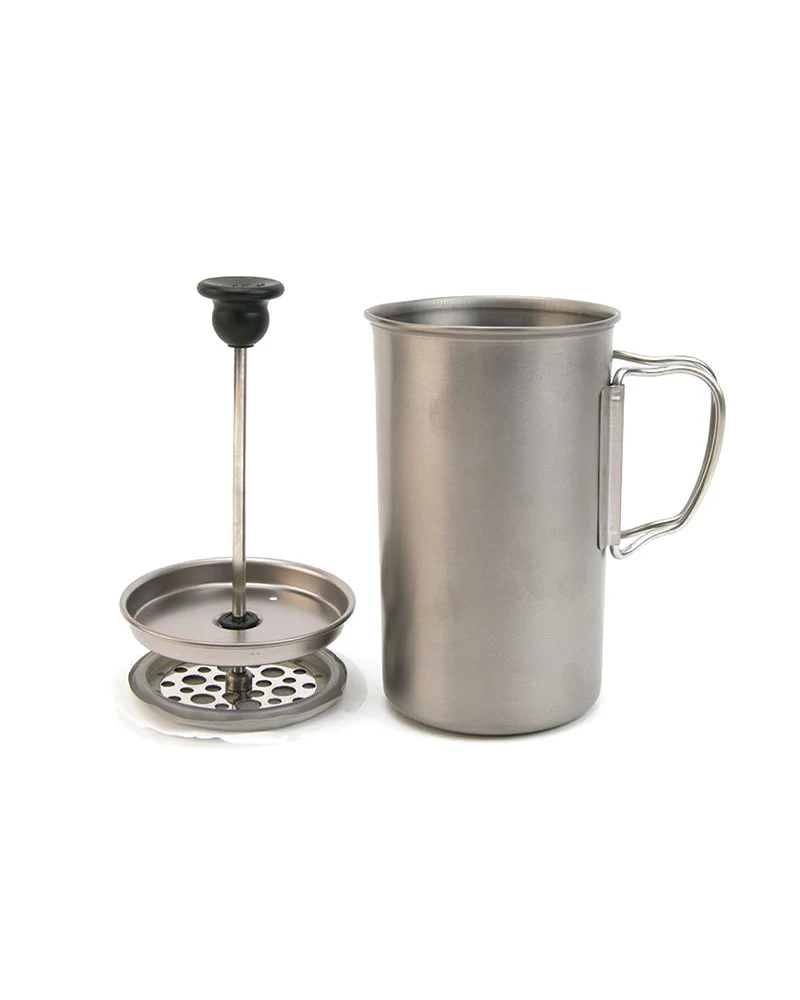
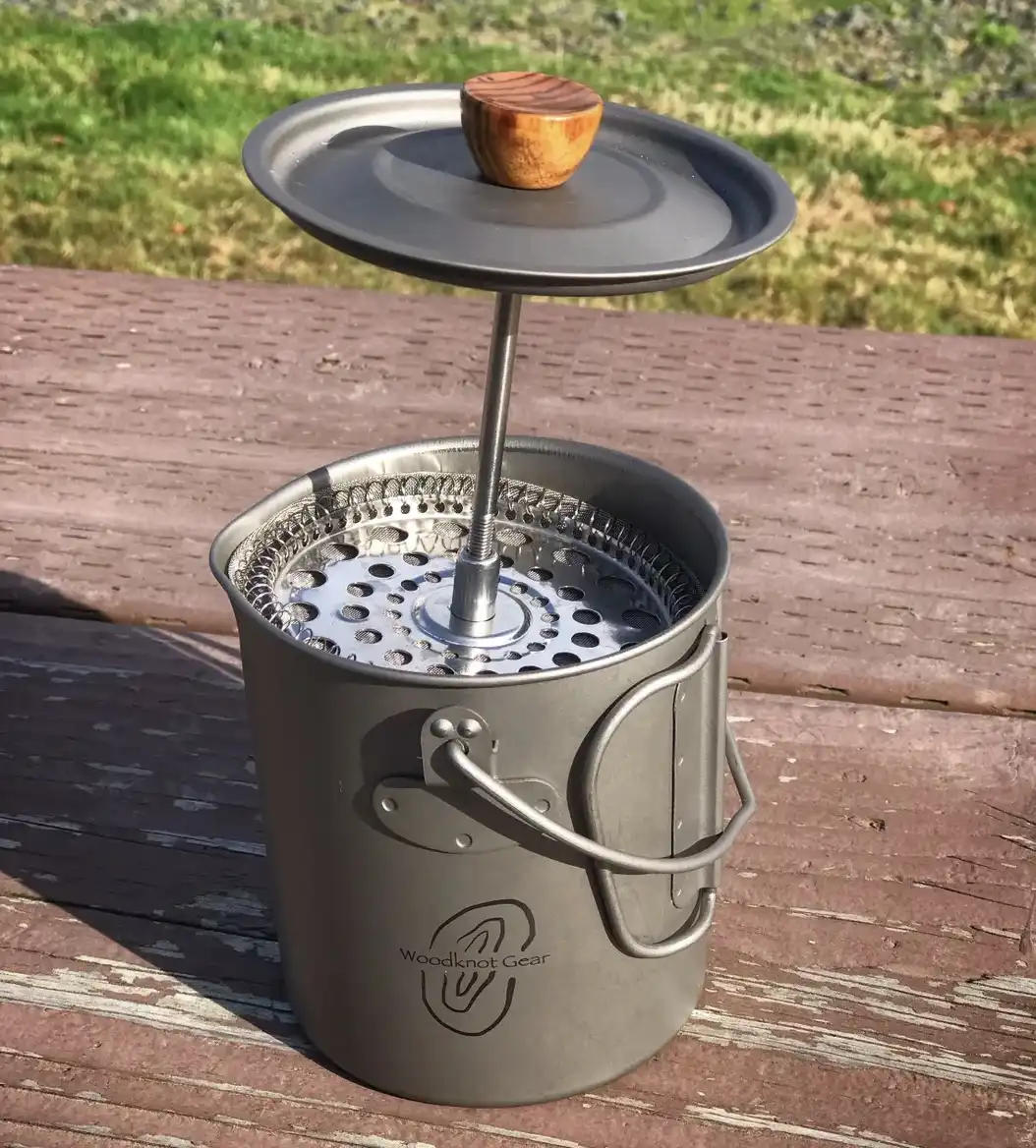
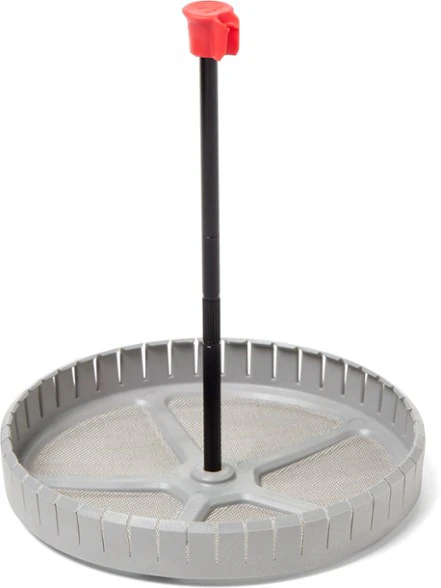
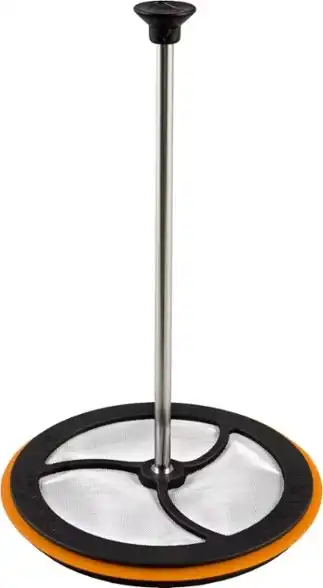





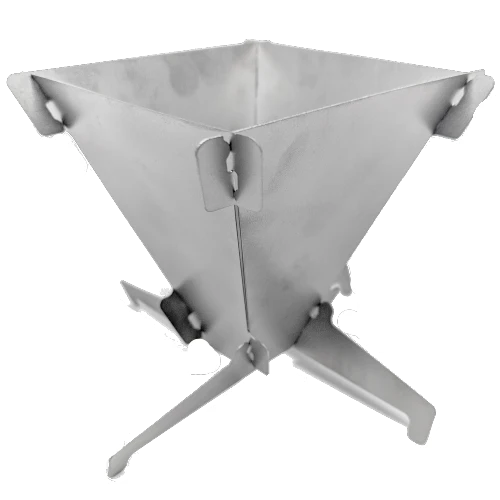


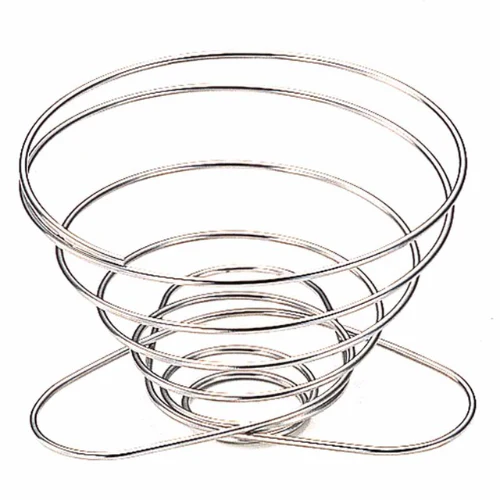
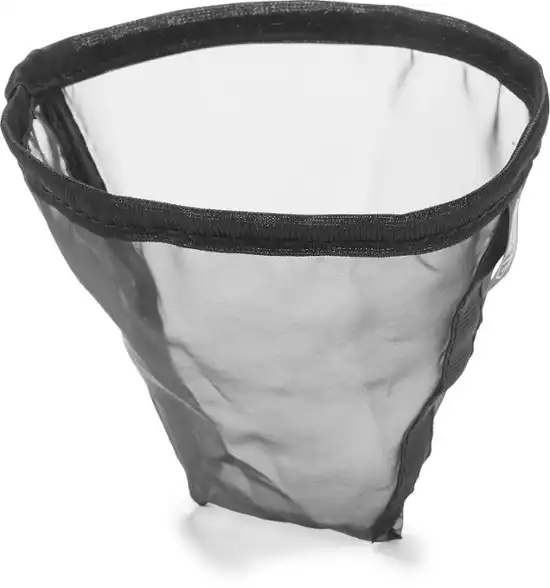
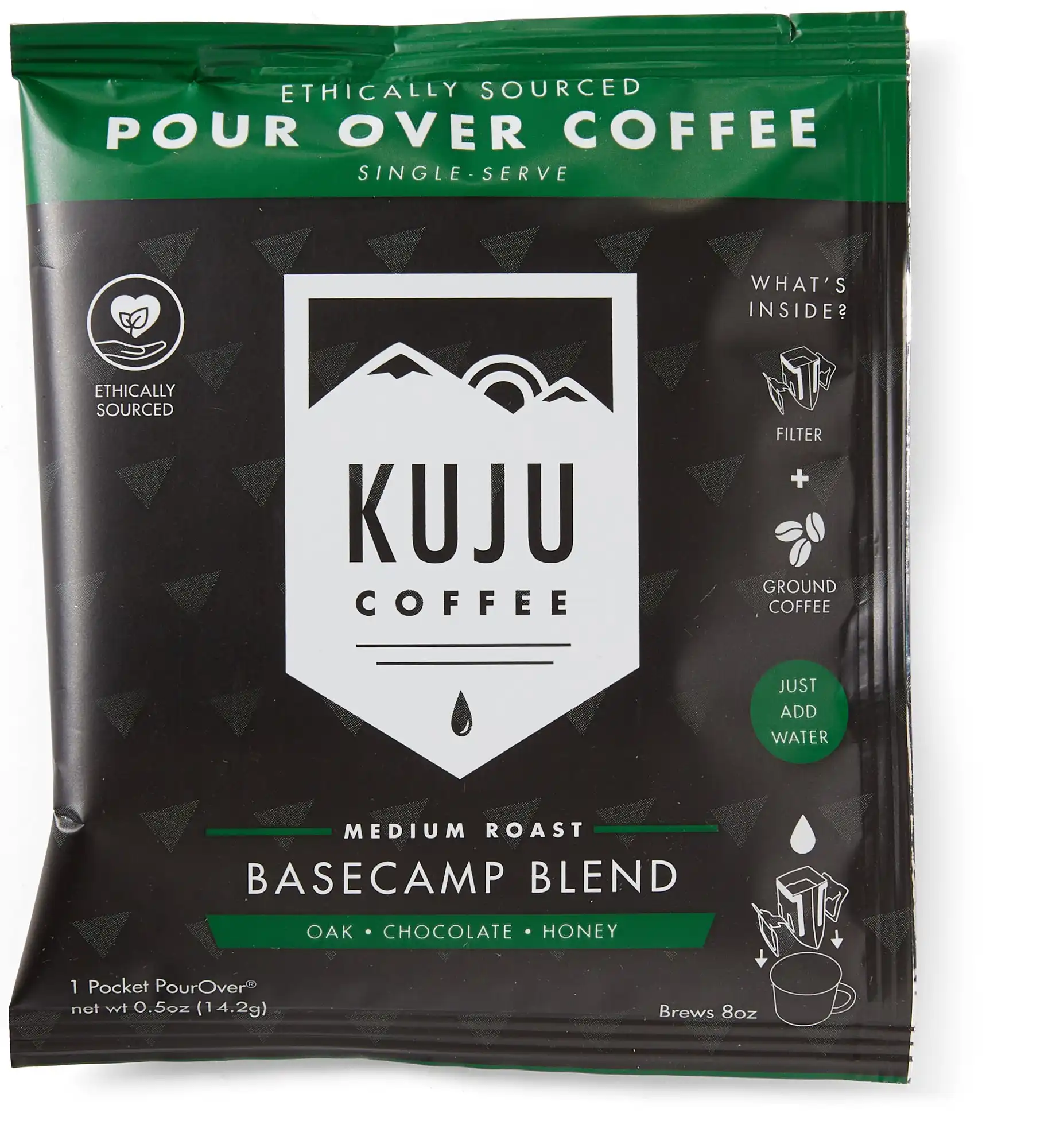

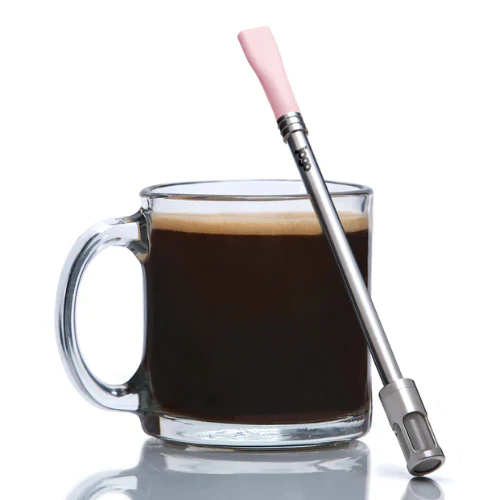

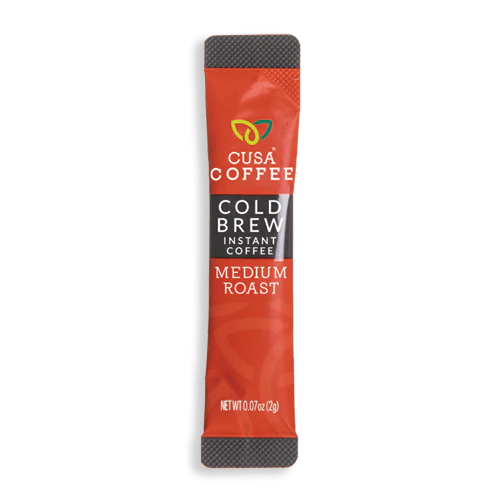
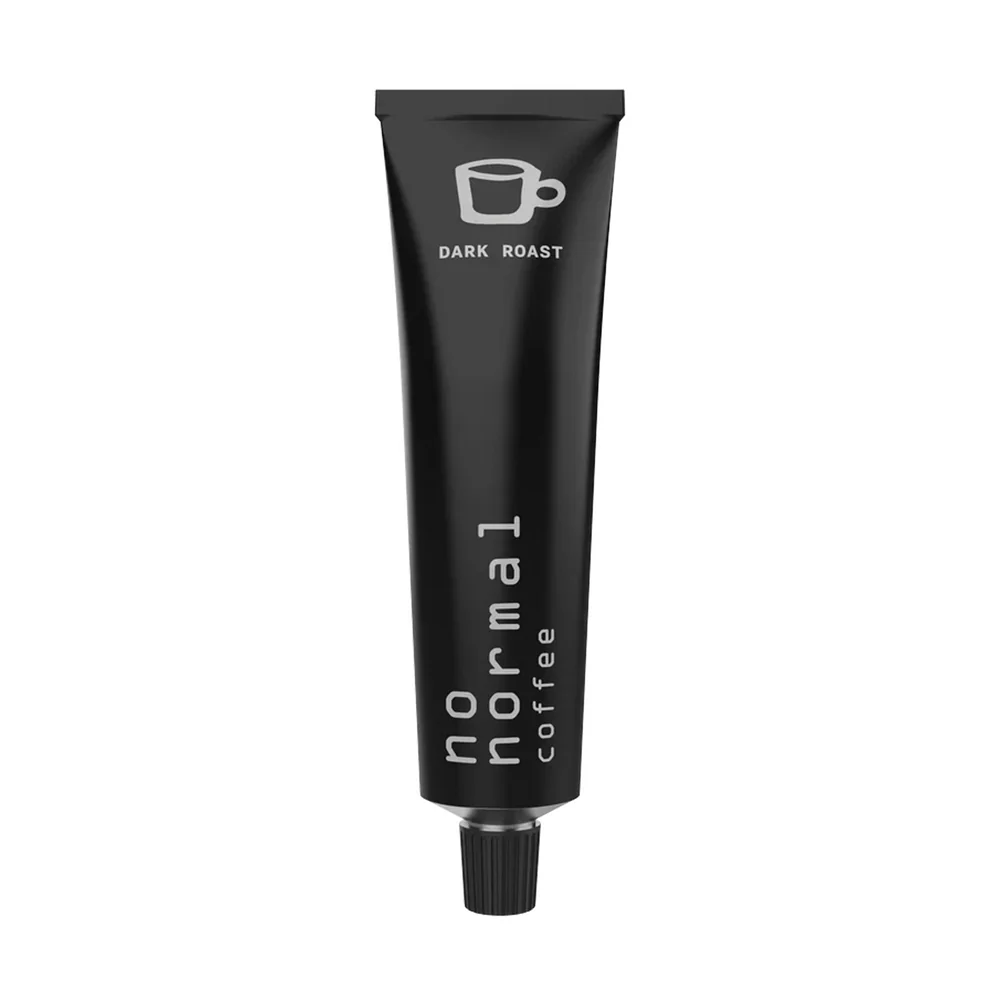
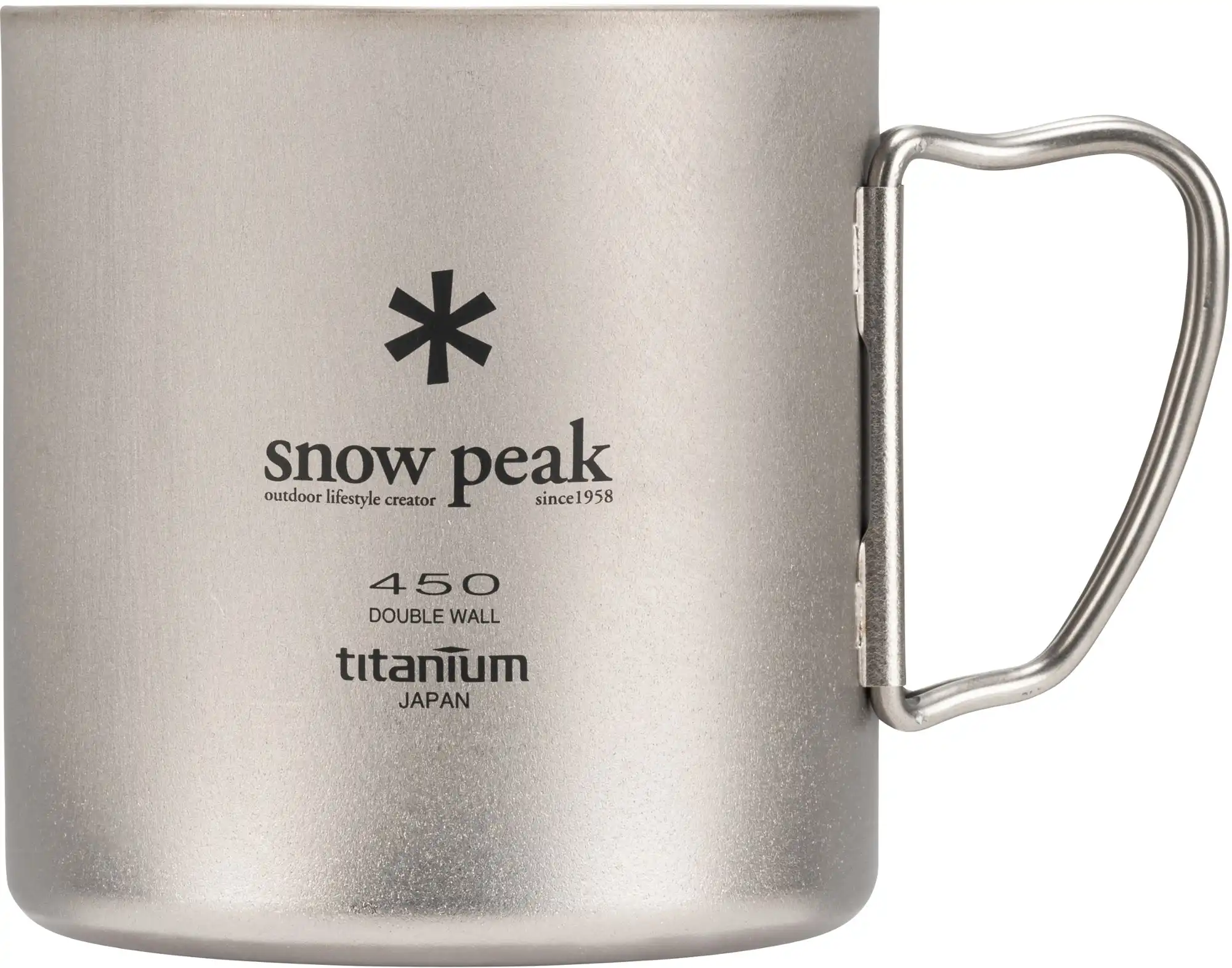
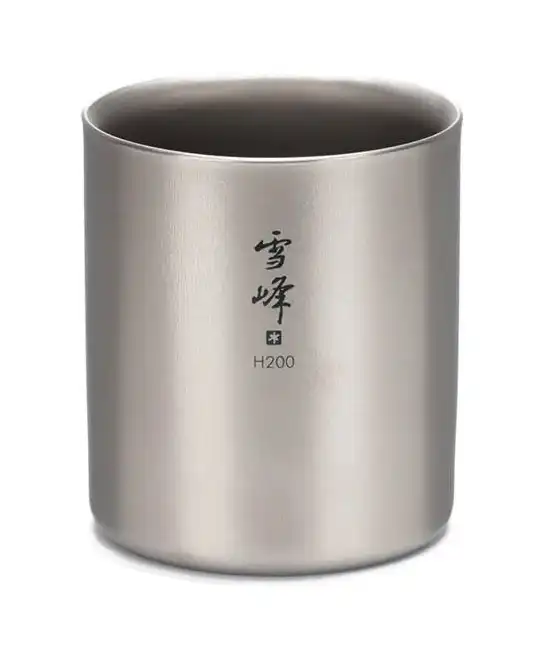


Home › Forums › How to Make Coffee in the Backcountry: Gear and Methods